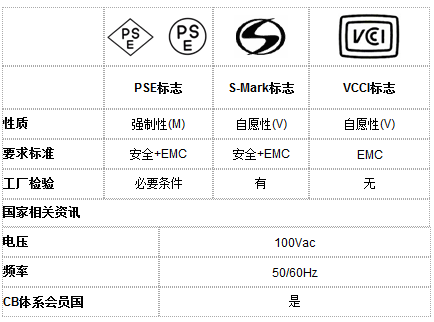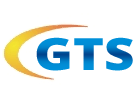
History
Old law -
Electrical method - legal background, from 1961 onwards, Japan adopted electrical appliances ban law Electrical Appliance and Material Control Law (DENTORI), as Japan's safety regulations based. This method standardizes 498 items, including parts, and many devices (such as TV sets, washing machines, etc.), and stipulates that these products must comply with the safety requirements established by the trade Ministry (MITI). The specifications in the electrical method are only listed in the local safety requirements of Japan and are indicated by N (e.g. first, second, etc.).
Electrical extraction -
The content of the law is in the T-mark specification, which contains class A and B products, and the manufacturing plant must obtain a registration card.
Class a products must be tested in MITI designated laboratories (JET - power supplies, JQA - TVs, etc., and JCII - component classes, different types of products, their designated laboratories may be different). After obtaining the test report, the manufacturer will submit a registration application to MITI, which will be issued by the government in conformity with the certificate and registered ID. The foregoing procedure shall be completed prior to listing,. Registered products, such as after the listing, the product problems, manufacturers at least fined 300 thousand yen, and stop production and sale of defective products.
Category B products: just self proclaimed, comply with safety requirements, plus circular T-mark.
Electrical method revision -
In July 1995, affected by WTO, Japan's trade pattern, transformation from export-oriented import oriented; and because the Japanese government hopes to reduce the intervention of the manufacturers of the import product liability law, the product responsibility by the government back to the importer and manufacturer, it will be DENTORI large scale revision, a product of the original provisions. By 282, which is reduced to 165; B from 216 to 333. The original circular T-mark logo, after this revision, will be discontinued due to the responsibility of the manufacturers themselves.
The security of law - law background in August 1999, electrical method (The Electrical Appliance and on Material Control Law) to electrical safety law (The Electrical Appliance and Material Safety Law), and the announcement of 2 years, went into effect in April 2001 day.
In the electrical acquisition method, only Japan's national standards, in the new law - electric safety law, will increase international standards (plus Japan's national differences, such as voltage differences), in the electric safety law (that is, Part 2), named IECJ. In general, electrical testing depending on different rated voltages to be tested, the original power from law contains the EMI requirements, in addition to the IEC standard, but also must meet the requirements of EMI. However, if the voltage in the CB report is different from the Japanese voltage, this CB report cannot be accepted.
The future will also be in the direction of relaxation of the law, will no longer be tested standards specified in the decree (number first, second, etc.)... Instead of referring to such a standard". But for product accountability, it is more rigorous. If the product has been registered in accordance with PSE mark, the product will be fined 100 million yen and be imprisoned in accordance with the law after the product has been listed on the market. In addition, in addition to the need to stop the production and sale of defective products, but also to further recover the products already on the market, the product registration ID will also be canceled.
Electrical safety -
Changes in statutory content
T-mark is replaced by PSE mark (Product Safety Electrical), PSE controls general products. There are also PSC: Product, Safety, Consumer (For, Laser, as, a, component) and PSG: Product, Safety, Gas (For, Industrial, Gas, Product).
If it is not registered before METI, it may be registered within 30 days after the listing. (the old law needs to be registered before listing.)
Product category change:
A product (Category A Product) to specific electrical supplies (Specified Electrical Appliance and Materials), attached to the product of the triangle T-mark to diamond PSE mark, and the name of hanging laboratories (such as JET). 165 items are reduced to 112 items stipulated by the original method.
While products (Category, B, Product) are changed to non specific products, need to stick round PSE mark (nature similar to CE, mark). 333 items are added to 340 items stipulated by the original method. Such products are also required to register with METI ID.
Specify Lab changes:
Specific and non specific products in the PSE system the main difference lies in the specific products required by the designated Lab for equal check book ", rather than simply hold the product specific test report of general Lab, you can apply for registration to the METI.
The designated Lab: JET, JQA, JECTEC (the Lab to wire and cable products) and UL (U.S.A.)??? TUV/ RL (Japan), but is no longer limited to some specific products only in Lab (such as: AC adapter JET only by the provisions of the past, as long as a Lab test) test conditions of this kind of the product can be made for the same inspection certificate". Recently, the designated Lab qualifications have been obtained.
Take mandatory products, for example, Japanese Importers obtained laboratory test reports, and then applied to MITI for conformity certification and registration ID. This is specified by the Lab for the same inspection book "(i.e. third certification), Japanese Importers to Lab for the same inspection certificate, apply for registration to the METI, by METI (METI) issued a registered ID.
The production plant still requires a registration certificate (existing in the old law). The registration process is mainly provided by the designated authority to inspect the quality control system of the plant and the equipment to be tested. Through the audit, you can obtain the factory login card. Original login certificate factory, apply for PSE mark only need to provide documents (login card and instrument list) for METI audit, and no FUI. As a factory, but for different types of products (such as: Power made the original factory for registration, the application for new products now, is the old Notebook) registration certificate does not apply to redo the first factory inspection.
New and old method of buffer period calculation -
A method for calculating the buffer period of products: (for a product from the original T-mark certification) if the product is in 1998 to obtain T-mark certification, the certificate valid for 7 years, the buffer period is 7 years (in List of Specified Electrical Appliance and Materials a table look up, different products have different buffer time), PSE mandatory date is April 2001 day.
After the T-mark certificate fails (2004/12/31), you need to apply for PSE mark. Such as hanging T-mark products are in stock, the night before the end of March 2008 to end pin (PSE + buffering force time period of 7 years), since April 2008 the stock will be sold.
The buffer period for class B products can also be found on the List of Specified Electrical Appliance and Materials table, ranging from 1 to 3 years.
Applicant qualification
A Japanese company registered with the government of Japan is required to apply for registration with METI. Specific products of overseas manufacturers such as agents to prevent with poor, product sales issues may bring the replacement agent, can in product testing by Jiamaiduo, a "fit the same check book, to pay the registration by new agents to METI.
Application process
1. determine whether it is a specific product project: you can check PSE List products in the Product List (Bao Hanjia and B two products), such as non products, you do not need to apply. In addition, if the new product is developed, it is best to decide whether the application is required by the designated Label.
2. documents to be submitted: (For, Test, Lab)
A. suitability for peer inspection applications
B. type differentiation table: different products have different types of classification tables. The primary use of this table is that when the model being applied is a range of products, the test Lab shall have this form for the purpose of distinguishing between the series and the possible series. The form of the form should be filled out by the applicant and referred to the Lab of the test to determine whether it can be used as a series of products. Take Power Supply as an example, different EI sizes (EI-41, 48, or, 57, etc.) can also be the same series, but different protection methods may not be series products (Ri Wen).
A summary of C. construction, materials and performance: manufacturers need to fill in the product characteristics and provide them to test units.
D. related technical documents: Spec. (Transformer and complete products), manuals, Label, wiring diagrams, PCB, Layout and important parts list, etc..
E. inspection equipment list: the manufacturer shall present a list of the equipment available in the factory and have a fixed format for reference.
F. samples: 2 PC., important parts (Fuse, AC, Outlet, Case, etc., need to provide 1 ~ 5 PC. for replacement), etc..
G., CB, Certificate & Report
H. authorization letter: Agency application is authorized by manufacturer.
I. withdrawal form: when the sample needs to be returned, this form should be filled so that JET can return the Sample to the correct person and unit.
3. A should file: (For METI apply for registration)
B. business start declaration form: application for registration.
C. factory login card
D. suitability equivalent inspection certificate (class a product only required), or, Test, Report (class B products): by Lab Issue.
E. manufacturing process inspection records: factory in the production process, from the recording materials, feed how sampling procedures; no fixed format, but there must be.
F. Label: details, please refer to the relevant information.
4. factory inspection: if the factory does not have the factory registration certificate, must do the factory inspection. The factory inspection is carried out by the unit designated by Lab, and the JET designated units are: Taiwan - large power, mainland - CCIC.
|



